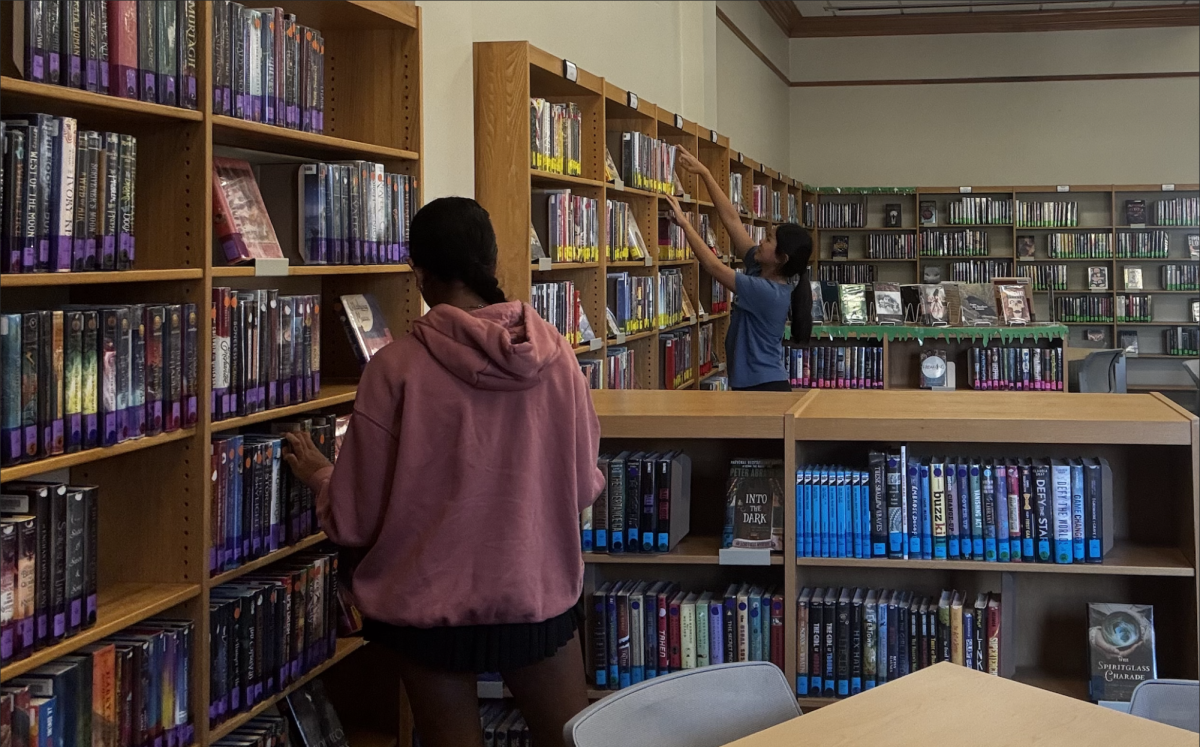This school year, students and teachers have observed that the books in the fiction section have been reorganized not by alphabetical order, but by genre.
This shift wasn’t without purpose. Last school year, librarian Addie Matteson and Michael Jacobs noticed that fewer and fewer students were checking out books. In addition, eBooks circulation increased. Over the summer, the two librarians worked together to create a plan to encourage students to check out more titles. They came to the conclusion that students are more likely to find books they like when they are in the proximity of each other.
According to Matteson, the new organization helps students discover new novels. “Students were finding books that they liked because they were next to other books that they liked,” she says. As a result, the number of books being checked out has increased, and the librarians can also give students better reading recommendations.
While the reorganized fiction section is a visible improvement to students, library staff put in more work than students realize to keep the stacks fresh and up-to-date.
To keep the fiction section appealing, the librarians must carefully pick out which new books to purchase. Between the two librarians, Jacobs takes on this job. To this end, she uses her time reading book reviews on Booklist and Kirkus Reviews, and a company called Junior Library Guild sends her lists of trending books in each category.
As soon as the library receives the new books, the behind-the-scenes work of preparing them for circulation begins. Library assistant Yvonne Gibney catalogs and processes them to make sure they are correctly labeled to be shelved. She will add the book’s title, genre, and other information to the George Woodruff webpage. She will write additional information on the book and attach labels to it to prepare it for students to check out.
This reorganization system has made the entire circulation process more efficient and coherent. Students can easily find books to check out and read for as long as they need. Students will return the book by sliding it through the slot in the counter. After it is returned, parent volunteers will place the book back on the shelves, ready to be checked out once again.
However, if a book is lost or damaged, students must pay a mandatory fee of $15. Matteson assures students that it’s not likely that the books are lost; they are just misplaced. Out of the 8,000 books in the library, only 10 or 12 books are lost each year.
Through combined efforts of Jacobs, Matteson, and Gibney, the GWL has served the Middle School students for nearly 40 years, after opening in 1985. Reorganizing the fiction section has demonstrated the librarians’ commitment to adapt to changes in students’ lives, significantly increasing the number of books being checked out.


